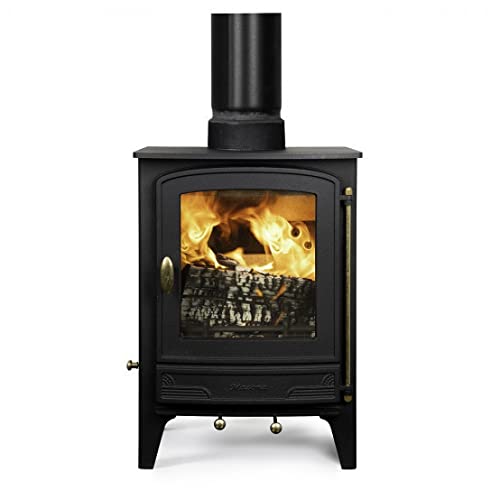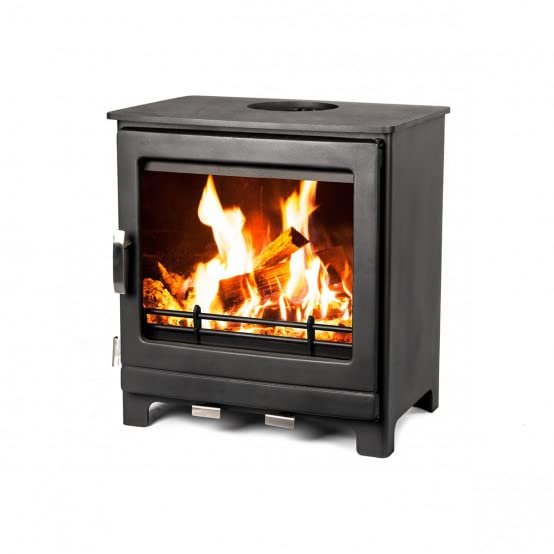Multi Fuel Stoves
Multi fuel stoves can burn a range of materials, other than logs. This includes smokeless coal that is authorised anthracite, peat or turf briquettes.
This flexibility in fuel choices will save you money on heating costs and also reduce your carbon footprint. Be on looking for models with multiple fuel nozzles, also known as jets or nibbles. This makes it easier to change between different fuel types.
Easy to Operate
Multi fuel stoves can be used to cook or heat for heating purposes. They usually come with a firebox which can be filled with different kinds of liquid and solid fuels, and a glass window to allow the user to see the flames inside. The stove also has air vents as well as an exhaust pipe to direct the smoke upwards into an external chimney. Certain models have a built-in water heater that can be used to heat water to make hot water or boiling.
The primary difference between a wood burning stove and a multi-fuel stove is that a multi-fuel stove is able to burn a greater range of fuels, including peat, coal, and wood pellets. They also can burn several liquid fuels like white gas, kerosene, unleaded auto fuel, and diesel. Some multi-fuel cookers can burn alcohol or solid fuel tabs. This makes them a very versatile camping tool.
Stoves that are able to burn multiple fuels are designed to be as efficient as is possible. They are typically rounded and low to protect them from wind. They are smaller than wood-burning models to save space. The stove’s burners are also positioned close to each other to ensure that it is efficient. This could reduce the amount of fuel consumed, which is good for the environment and the pocketbook.
It is important to choose the right fuel for your stove. For instance, it is recommended that if you are going to use logs in your stove, they should be dry prior to starting a fire. This will help prevent the logs from blackening the glass of your stove when they burn. Dry logs burn more quickly and can decrease the amount of fuel used.
 The most effective method to ignite a multi-fuel stove is place a few firelighters on the top of a stack of coals or logs. Once the firelighters have been lit, place a layer of the chosen fuel on top of them. Then you can add more fuel to keep the flame lit.
The most effective method to ignite a multi-fuel stove is place a few firelighters on the top of a stack of coals or logs. Once the firelighters have been lit, place a layer of the chosen fuel on top of them. Then you can add more fuel to keep the flame lit.
Easy to Clean
Multi fuel stoves are different from log burners as they permit the use of many types of solid fuels, such as wood or coal. Each type of fuel has its own cleaning and maintenance requirements. Wood is one of them. It may release a creosote-like byproduct that can darken the glass on the stove’s door. Luckily, there are several ways to keep your glass clean between fires. One method is to simply wipe down the glass by using a piece newspaper that has been a little wet. Another great idea is to dip some newspaper in the ash from previous fires and then use it to wipe the glass.
For coal burning the stove must have an open fire grate, so that combustion air circulates through the bottom of the stove. Many multi fuel stoves also include an ash pan which sits underneath the grate to collect any ashes that fall through. The ash pan must be cleaned regularly to avoid it from overflowing and blocking the air flow.
If you’re using wood in your multi-fuel stove, make sure you only use seasoned wood that has 20% moisture percent or less. The wood that is wet releases more smoke and produces more creosote than dry wood. You should also be careful to stay clear of burning household waste, painted or treated wood and cardboard. These substances release harmful chemicals into the air that can damage and shorten the life of your stove, and can cause health problems for you and your family.
Some of the newer models of multi-fuel stoves come with an air wash system which helps keep the stove’s glass window clear. The air wash system circulates cooler air inside the stove to reduce the build-up of byproducts from the flames that are reflected on the glass. This option is not required, but worth the investment if wish to spend less time cleaning your stove.
Easy to maintain
A multi fuel stove provides the convenience of burning different types of fuels and can help you save money on heating costs. It also provides the flexibility of being able to burn Chesterford – Eco-Friendly Multi Fuel Cast Iron Stove fuels such as smokeless logs or sustainably harvested wood. This can be beneficial to the environment as well.
 Multi-fuel stoves have the advantage of being able to use a variety of fuels. They are also easy to maintain and fix. The door opens to allow for fuels to be ignited and loaded. A glass window lets you see the flickering flame. A multi-fuel stove might also have air vents that allow you to moderate how your fire burns and a flue pipe that helps to take the fumes and smoke out of your home.
Multi-fuel stoves have the advantage of being able to use a variety of fuels. They are also easy to maintain and fix. The door opens to allow for fuels to be ignited and loaded. A glass window lets you see the flickering flame. A multi-fuel stove might also have air vents that allow you to moderate how your fire burns and a flue pipe that helps to take the fumes and smoke out of your home.
Stove maintenance is fairly straightforward and involves emptying the ash pan regularly. This is best done when the stove is hot to avoid ash accumulation and air flow. A lot of multi fuel stoves come with riddling grates that are able to be opened or closed to aid in the removal of the ash. Some multi fuel stoves include an additional or tertiary supply that can be used to assist the burning of coal.
Many multi-fuel stoves have an ash pan that can be removed and should be emptied often to stop it from overflowing and blocking the grate. Some stoves have a fixed grate and do not come with an ash pan that is removable. It is also recommended to empty it whenever needed to avoid the build-up of ash that could cause problems with the stove’s combustion.
Multi-fuel stoves are gorgeous designs for any space. They come in a variety of designs to match any style of home. Cast iron is the most commonly used material used, and they can be finished with a variety of colours to match your decor. Many multi fuel stoves come with the classic black finish that is ideal for those with a more traditional or rustic design, while others are made in more striking colours like red, blue and green.
Easy to Install
Multi fuel stoves have a firebox grate that is designed to accept different kinds of solid fuel. This is due to the fact that coal and wood require different conditions for combustion. For example wood burns more efficiently when it is properly seasoned. In the same way, to ensure that the coal burns properly, it requires air from underneath. Multi-fuel stoves feature riddling grates which let the ash fall through to an ash pan underneath. This is a simple way to maintain a flame.
Multi-fuel stoves are capable burning a variety of solid fuels, including turf briquettes or peat as well as smokeless coal, anthracite and logs. They can also burn liquid fuels, such as white gas, isobutane canisters or Kerosene. Multi-fuel stoves may be used with a variety fuel tabs and gels’.
Most multi fuel stoves are designed to be safe and simple to operate. They have separate air controls that can be adjusted to ensure that each kind of fuel is burned efficiently.
When using a multi-fuel stove it is crucial to follow the instructions of the manufacturer regarding which fuels can be burned and which should not be employed. For instance, it is not advisable to burn unseasoned wood, household rubbish or painted or treated wood. These materials could produce large amounts of smoke, waste energy and create a health hazard.
Separate air controls allow you to regulate both the flames and heat output of your stove. This is especially beneficial for those who have a multifuel stove, since certain fuels generate more heat than others.
Air wash systems are also found on most multi-fuel stoves. The system is designed to blow cool air into the glass door as the fire burns. It helps keep the glass clean and keeps the combustion products from sticking to the glass. This is a great way to keep your view unobstructed when the fire is burning.
